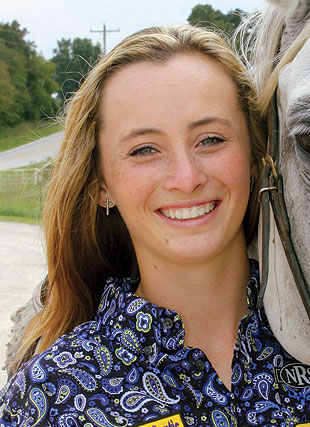
“Life’s about learning,” explained Barry Slayton. “If you’re not learning you are going backwards – and that applies to all areas of life these days.”
When Barry started raising beef cattle in 1975 with a commercial herd, he continued to learn and grow and adapt livestock to what worked for him. “I was working full time and adjusted my livestock production to what worked for me and my work schedule. I’ve raised feeder pigs, Holstein heifers and even backgrounded steers for a while,” he explained.
SimAngus Cattle
As time progressed and Barry had the opportunity to retire, he got more involved with registered beef cattle. “I like Red Angus for their adaptability but was always looking for more hybrid vigor. I really liked red Simmentals for their heat tolerance and the cross is a great fit for the Ozarks,” he said.
Slayton Farms located in Rover, Mo., got their first SimAngus bulls about nine years ago. They currently have about 75 cows and replacement heifers. “We keep our own replacement heifers, minus the average 10 percent cull animals.”
One of the reasons the Slaytons like the SimAngus breed is that they can be registered. “The Simmental Association allows registration of percentage animals, meaning anything that is 1/8 Simmental can be registered with the Simmental Association,” he explained. “They also have total herd reporting, where we report on every animal, every year. We report birth weights, weaning weights, height, docility, to name a few and we get EPDs back on all that information, even on the percentage animals.
“Through this we have realized that an 1/8 to 1/2 Simmental cross maximizes hybrid vigor,” he explained. “You automatically get about a 10 percent spurt in growth just because of the cross breeding.”
The Association and Science
“The Simmental Association is very science based. They use EPDs and genetic testing to continue to improve the breed,” Barry reasoned. “The association actually utilizes DNA testing in herd bulls to verify parentage and genetics. They can review the accuracy of generations back five to six generations and can determine what calves the bulls should produce based on their genes. They have genes mapped and know based on the genes in the DNA, if they might have calves with better milking EPDs, growth EPDs, etc,” Barry explained.
He also utilizes artificial insemination (AI) to improve genetics in his herd. “We use fixed-time AI for all our heifers and a few of our cows, with most of them scheduled to calve starting March 1 through April,” he explained. “We have a small herd that calve in the fall, starting in mid-August.”
Another scientific option they use at Slayton Farms is a blood test for pregnancy. “Twenty-eight days after we do the AI work, we can pull blood, UPS it to the lab and have results back in three days confirming a pregnancy or not,” Barry explained. “So if they are not pregnant, we run them with the herd bulls and test again. From here we can keep our records concerning AI breeding or if our herd bull bred them,” he added. “It’s a really simple and effective option for our herd.”
Education and Learning
“One of the most important things for farmers and agriculturalists today is to stay on the leading-edge of science,” reasoned Barry. “There are lots of journals and magazines to read and learn from and I’m a supporter of the University of Missouri Extension and local cattlemen associations. These are all venues for education and knowledge for farmers. This is how we learn about what works and what doesn’t,” he added.
Other advice from Barry included starting small and finding cost effective improvements that can be done gradually. “You can’t go out there and do it all at once and you have to know that,” he reasoned. “In this world, we are so used to instant gratification, but in farming instant progress isn’t available. When you have to wait at least nine months for a calf and then wait a few years for that calf to produce another offspring to get tried and true EPDs and genetics, you realize quickly that farming is a long-term investment.
But it is an investment Barry is proud to be a part of. “Every day is a good day in the Ozarks,” he chuckled. “And I’m happy to be living in the middle of my dream,” he said as he scanned the pastures. “I’ve always been a farmer at heart and I’m proud to be able to live and work that lifestyle.







